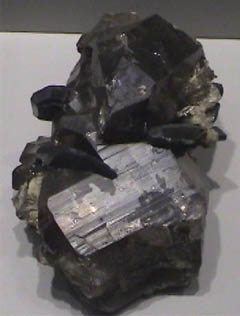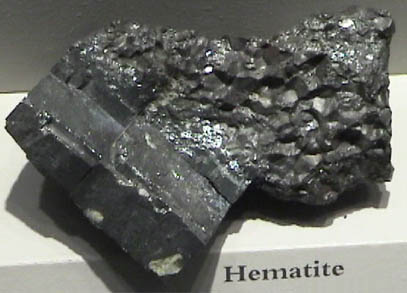These samples of hematite are on display at the Smithsonian Museum of Natural History. The size of the sample is about 15 cm high.
The name hematite comes from the Greek word for blood. The hematite is black, but when powdered or fragmented can take colors ranging from ochre red to jet black. An opaque mineral with a dull lustre, it has been known as "black diamond". Historically it was used in the making and coloration of pottery. It was also made into a paste from which beads were made and hardened, and appears commonly today as black beads in costume jewelry.
| 



